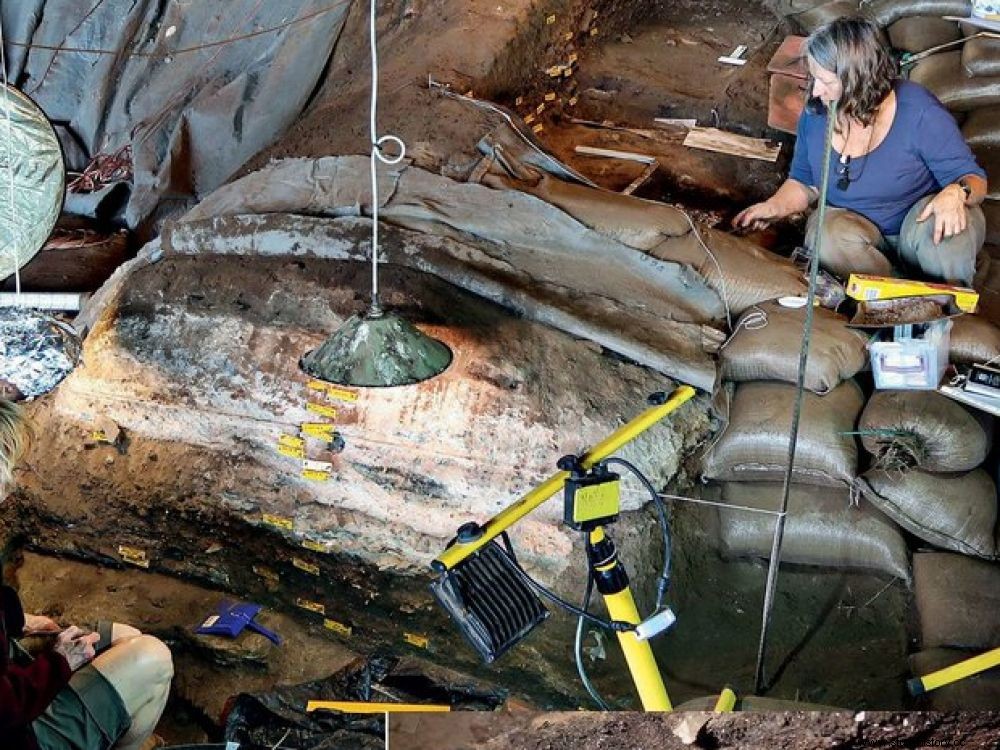Discovered in a South African cave, this litter alternates plant layers with ash, used as an insect repellent and thermal insulator.

Fossilized litter unearthed by excavations mixed sheaves of plants from the panicoideae subfamily and camphor leaves.
This article is taken from the monthly n°884 of Sciences et Avenir-La Recherche, on newsstands in October 2020.
Perched on a cliff in the Lebombo Mountains in South Africa, the cave of Border Cave has just delivered a priceless treasure:an international team of archaeologists led by Lyn Wadley, from the University of the Witwatersrand in Johannesburg, have identified the most old bed never discovered. Dating back around 200,000 years, it takes the form of fossilized plant litter, alternating with layers of ash. The previous record belonged to a 77,000-year-old litter found at the Sibudu site, also in South Africa.
The making of the beds on the two sites is comparable
The making of the beds on the two sites is comparable. That of Sibudu consists of a superposition of layers of rushes and sedges (plants of wetlands), covered with aromatic insect-repellent and larvicidal leaves. At Border Cave, our ancestors used mostly sheaves of plants from the panicoideae subfamily broad-leaved - fodder plants that still grow in the area -, embellished with camphor leaves, insect repellent tree.
Above all, in both cases, the inhabitants relied on fire for their upkeep:the grass carpets were regularly burned, probably for reasons of hygiene, and the ashes used as an insulating underlay and, probably, to protect against crawling insects and ticks. At Border Cave, archaeologists have thus deduced from the location of the various litters, placed near hearths at the bottom of the cave, that the inhabitants prepared them by burning old litters, then covering the ashes with a new layer. of herbs.
Complex cognitive and social skills
The Border Cave site therefore testifies to the fact that its inhabitants had other uses of fire than those mastered by humans around 400,000 years ago (lighting, heating, cooking, protecting themselves from predators), explains Lyn Wadley in the journal Science . For the archaeologist, the use of fire to sanitize the litter testifies to "the maintenance of the camps, which makes it possible to lengthen the capacity of occupation of the places" .
A practice that also suggests complex cognitive and social skills from that time:it was unknown until then that 200,000 years ago, nomadic hunter-gatherers were already able to protect their camp from parasites, thanks to their mastery of fire. and their knowledge of medicinal plants.
